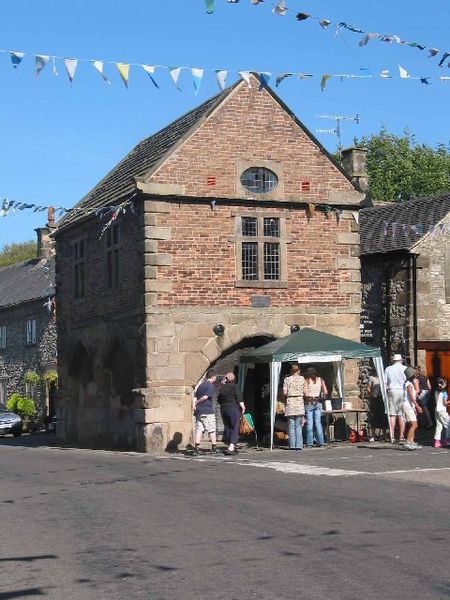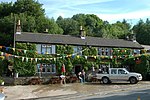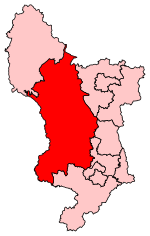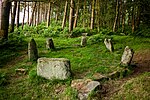Winster

Winster is a village in the English Derbyshire Dales about 5 miles (8 km) from Matlock and 6 miles (10 km) from Bakewell at an altitude of approximately 820 feet (250 m). It was formerly a centre for the lead mining industry. The village lies within the Peak District National Park and The Peak District Boundary Walk runs through the village. Winster has many listed buildings, including the Market House open daily as a National Trust information point. The 2021 census shows a population of 551, down from 633 in 2001 and 600 in 2011. The village has a primary school, two churches, two pubs, a village hall (The Burton Institute) and a village shop (owned by the community) which includes a post office. Winster was mentioned in the Domesday Book in 1086 when it was owned by Henry de Ferrers.A workhouse at Bank Top (grid reference SK239602) was opened in 1744. It had a rule that forbade any relief outside of the workhouse. By the 1770s it could house 40 inmates.Winster Market House was the National Trust's first property in the Peak District and was acquired in 1906.
Excerpt from the Wikipedia article Winster (License: CC BY-SA 3.0, Authors, Images).Winster
Schulstraße, Düsseldorf Carlstadt (Stadtbezirk 1)
Geographical coordinates (GPS) Address Nearby Places Show on map
Geographical coordinates (GPS)
| Latitude | Longitude |
|---|---|
| N 53.1419 ° | E -1.6399 ° |
Address
Palais Nesselrode
Schulstraße 4
40213 Düsseldorf, Carlstadt (Stadtbezirk 1)
Nordrhein-Westfalen, Deutschland
Open on Google Maps










